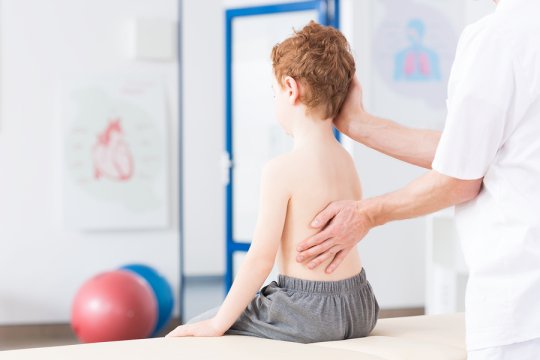Comparing Scoliosis in Children and Adults

The spine naturally curves inward and outward. However, in some patients, the spine also curves from side to side. This condition is known as scoliosis. The degree of scoliosis can vary considerably from patient to patient. For some patients, scoliosis may be little more than a minor nuisance. Others might require spinal fusion surgery to prevent the problem from becoming worse.
Scoliosis in Children
Scoliosis is most often diagnosed in children and adolescents. It is typical for the patient to not notice anything unusual. Instead, the abnormal curvature of the spine may be detected during a routine physical exam. Much of the time, children are diagnosed with idiopathic scoliosis, which simply means that the cause cannot be determined. In other cases, this spinal deformity may be the result of an infection, injury, or neuromuscular disease. One major difference between this condition being present in children versus in adults is that a child’s skeletal structure is still developing. If the curvature remains mild, a spinal surgeon may recommend re-examining the curve every few months. Patients with moderate spinal curvature might need to wear a back brace to prevent the curve from progressing. Children and adolescents with severe curvatures or those that are still progressing might need surgery.
Scoliosis in Adults
Adults may be affected by adult idiopathic scoliosis or degenerative scoliosis. The first type is diagnosed in adults who were first found to have scoliosis as children. Those who had curves greater than 50 degrees may be more likely to experience a continuation of the abnormal curvature into adulthood. The other type, degenerative scoliosis, first begins in adulthood. It’s more common among people older than 65 years of age and it’s caused by the degeneration of the facet joints of the spine. As the facet joints deteriorate, they begin to shift, which allows the spine to curve abnormally from side to side. Generally, degenerative scoliosis is initially treated with ongoing monitoring, braces, and nerve block injections. If these options fail and the patient experiences functional problems from the condition, then surgery may be considered.
At Spine Institute of Nevada, you’ll find a comprehensive range of solutions for patients with spinal deformities in the Las Vegas area. Our spine surgeon performs minimally invasive procedures such as spinal fusions. New and current patients can reach a friendly staff member at 702-239-3787.
